Real Madrid faced Leganés in a midweek fixture with the pressure certainly on, having dropped to sixth in the table after the postponement of the Clásico. They reacted with arguably their best performance of the season, despite Zinedine Zidane’s protests to the contrary.
Leganés arrived under caretaker boss Luis Cembranos but failed to hold out for long with Rodrygo Goes and Toni Kroos both scoring within the opening 10 minutes. Sergio Ramos followed up from the penalty spot at the second time of asking, then allowing Karim Benzema to convert from 12 yards in the second half. Luka Jović notched his first for the club to round off an impressive 5-0 rout.
This tactical analysis will provide analysis of the tactics of both Real Madrid and Leganés, looking at what Zidane and Cembranos can take from this La Liga fixture.
Line-Ups
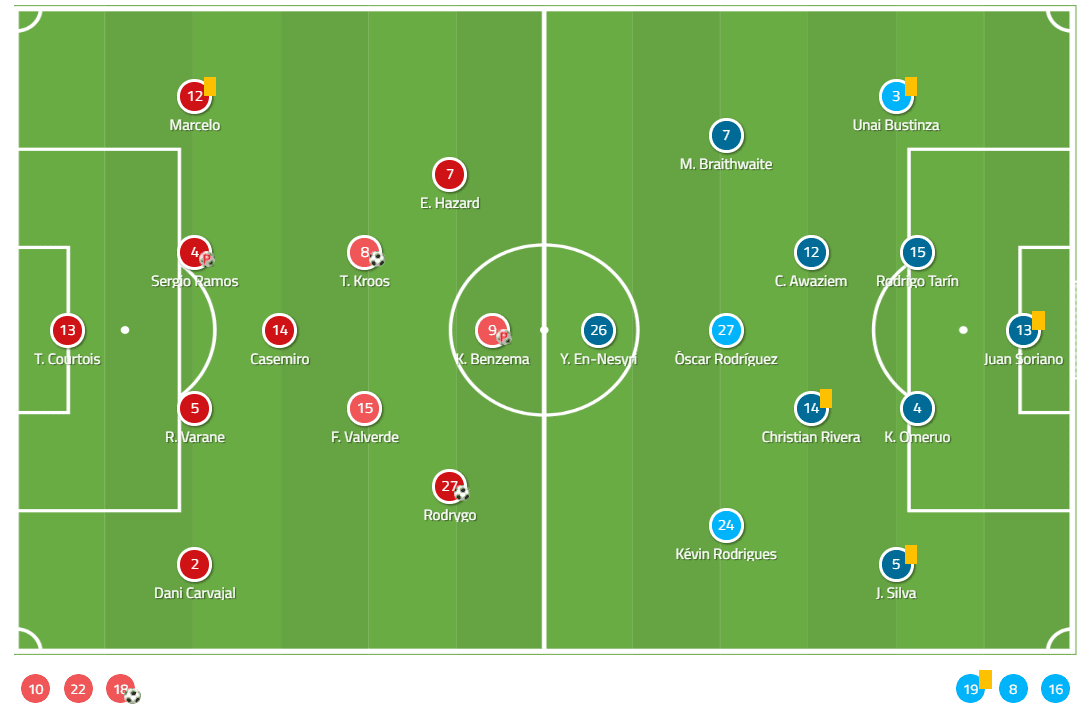
Zidane gave a first Bernabéu start to Rodrygo in attack in an otherwise full strength side. The only other surprise was the inclusion of Federico Valverde, despite expectations that he would be rested to provide minutes for Luka Modrić.
Leganés made widespread changes with Cembranos seemingly more focused upon the weekend fixture against Eibar. Juan Soriano came in between the sticks and Cembranos lined his side up in a 4-2-3-1, though it would also resemble a 5-3-2 at times, with the likes of Dimitrios Siovas and Roque Mesa rested.
Rodrygo’s rounded display
A teenager making his first La Liga start could be forgiven for being slow to get going, but right from the off, Rodrygo made an impact and even opened the scoring after just seven minutes. With nine touches in the box, more than anyone other than Eden Hazard, he was instrumental in how Real Madrid exploited the flanks to get to the touchline and cut inside, preferring a more free flowing and passing style to the usual approach of crossing which Zidane prefers.
That suited Rodrygo, who totalled six dribbles and would lead the way in taking possession from defence to attack with his movement and bravery on the ball. Not afraid to take players on, he demonstrated the key difference between him and Vinicius Junior in that he picked his moments perfectly, knowing when to lay the ball off and making the same impact on both flanks. Reading the game more naturally, he was able to interchange with Hazard, as shown by his action map below, and his quick touches were essential to adding energy to the Real Madrid attack.
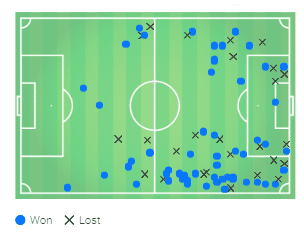
What was even more impressive was his defensive contribution: five defensive duels, winning three, in addition to three interceptions and six recoveries. That is in stark contrast to the other wingers available in the squad and also helps Zidane to know that the transition in counter-attacks can be started from deep, with Rodrygo using his possession to get forwards quickly off the ball rather than taking men on as often as the likes of Hazard or Vinicius.
Leganés’ failed defensive set-up
Leganés’ approach in the opening minutes was a clear one of looking to sit deep, maintain a rigid structure and aim to frustrate Real Madrid. However, it was poorly executed and was highlighted even more by a lack of work rate and quality. With just 45% of defensive duels won, Leganés haven’t produced a worse return for this figure since January 2017. As such, Real Madrid were not particularly tested when looking to break through. Los Blancos found it easy to cut through the Leganés set-up despite the number of men in deep positions.
The perfect example came with the opening goal. Real Madrid had four men in the box compared to Leganés seven outfield players, yet both Benzema and Rodrygo found acres of space by pulling off their markers with good vision and movement as the Leganés defence were caught ball watching as the ball came across the box. In such scenarios, even having three defenders centrally on the edge of the six-yard box could not prevent Rodrygo from having the intelligence to drop between them with seemingly no-one aware.
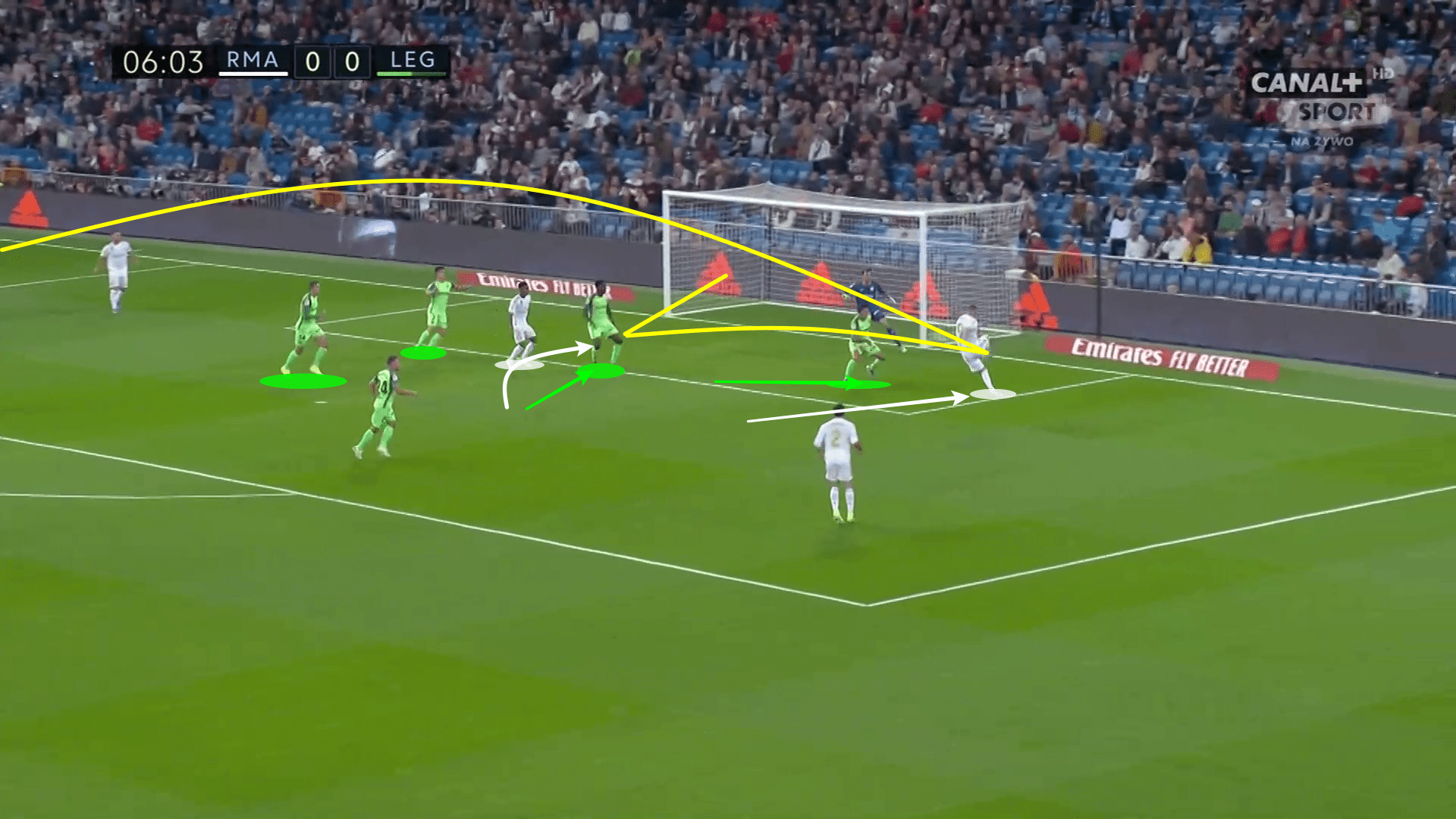
With Real Madrid boasting over 60% possession, Leganés were content to sit deep and allow the home side to control the flow of the game. Fortunately for the Pepineros, Real Madrid didn’t get out of first gear throughout much of the tie and yet still found it easy to exploit spaces in the Leganés set-up. Later on, when Leganés became more offensive and combative, this only opened up further. An injection of pace from the likes of Modrić or Jović immediately set them on the back foot and racing back.
Jović’s transitional role
Jović will remember this game as the one in which he opened his account for Real Madrid with a back-post header which was well-executed, coming only minutes after another headed goal was ruled out for offside. The real importance of his role though, and one which could come to determine whether or not he fits into Zidane’s plans, was his role in the transition.
Previously, he has looked to stick to the last defender and be more of a traditional number nine, rather than possessing the movement that Benzema offers. Against Leganés that had clearly changed. When Real Madrid were defending he would look to drop deep in between the Leganés midfield and defence to position himself in the space available and would instantly manoeuvre himself into a useful position when possession turned over. Then, once on the ball, he would hold up play to allow for wide runners and would then turn and sprint to continue the counter-attack, laying off to either side of exploiting the space between the defenders which became stretched by the wide runners. With a 100% pass completion rate, it was a role that he played perfectly.
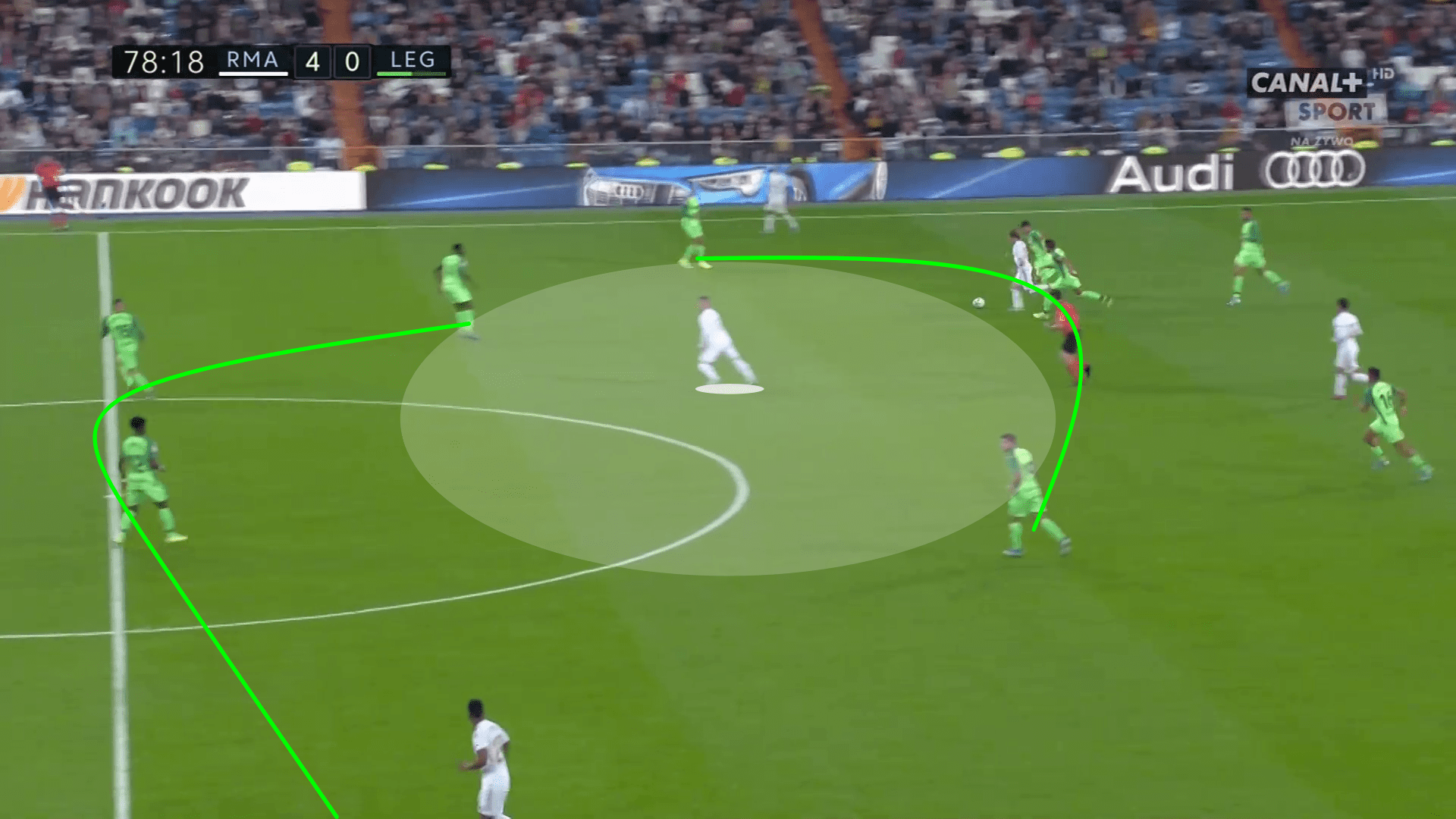
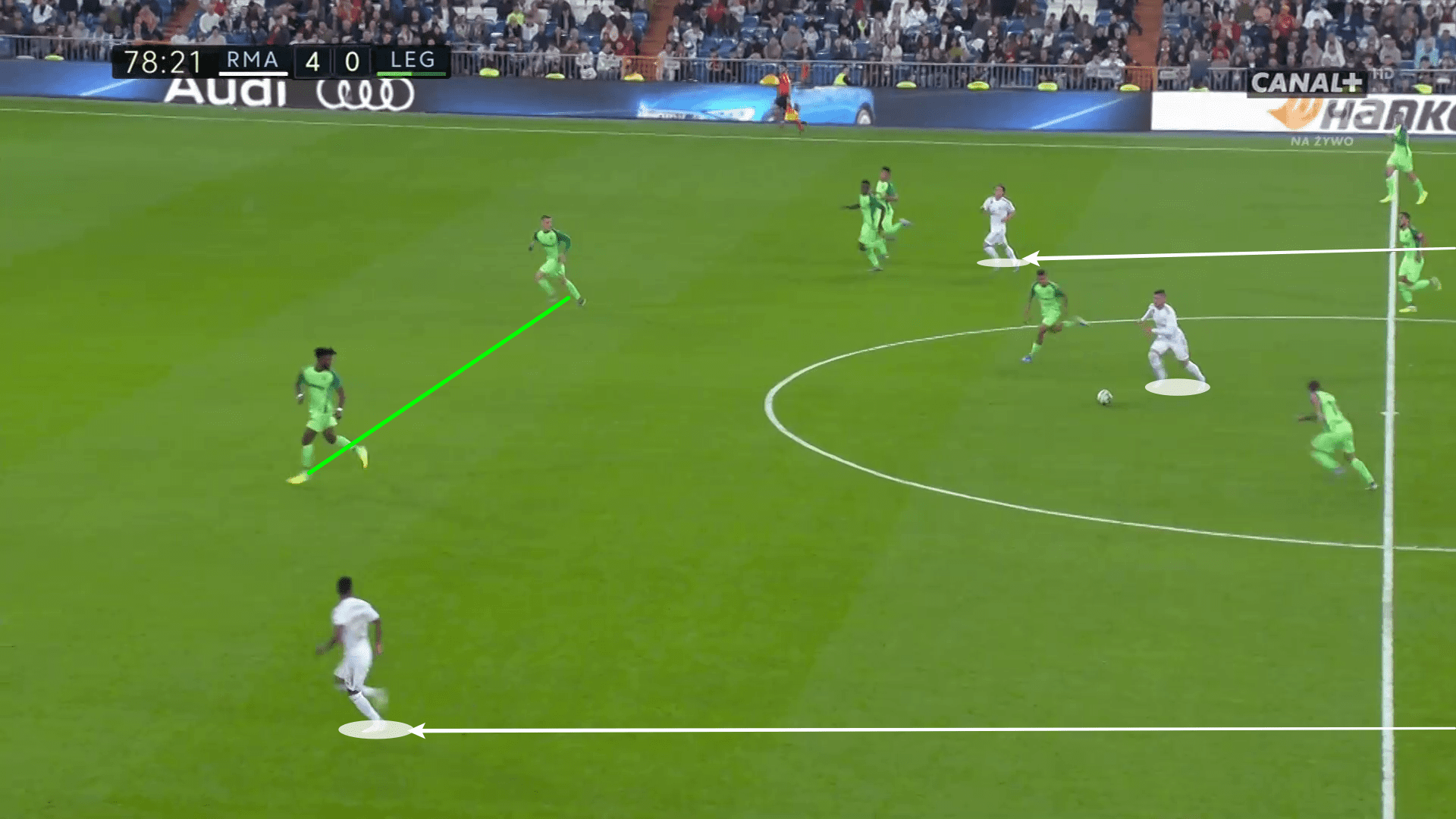
His xG of 1.01 was his highest yet in a Real Madrid shirt and he was a constant threat when the ball was coming in from wide. It’s clear that his profile is substantially different to that of Benzema, but with each game he plays he picks up more traits of the Frenchman. It has been a slow start for him in Madrid, but he is clearly putting in the effort on the training ground and is making an improvement and fitting into Zidane’s system as a result.
Conclusion
This was the most coherent and offensive display that Real Madrid have produced all season. Granted, it came against a woeful Leganés side who were by far the weakest team to face Zidane’s men this season, but this was still positive for Real Madrid. The performances of Rodrygo and Jović price the greater depth available this season whilst the energy in midfield and in transitions was a change from recent fixtures. As for Leganés, they may have made changes and looked to focus on their upcoming games which are more winnable, but they won’t get much playing with such disorganisation.
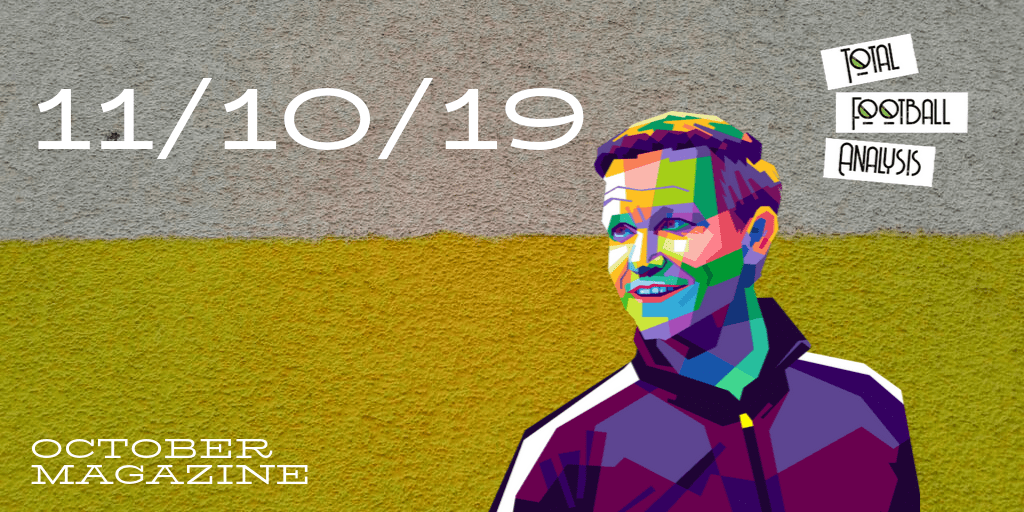
If you love tactical analysis, then you’ll love the digital magazines from totalfootballanalysis.com – a guaranteed 100+ pages of pure tactical analysis covering topics from the Premier League, Serie A, La Liga, Bundesliga and many, many more. Buy your copy of the October issue for just ₤4.99 here





Comments